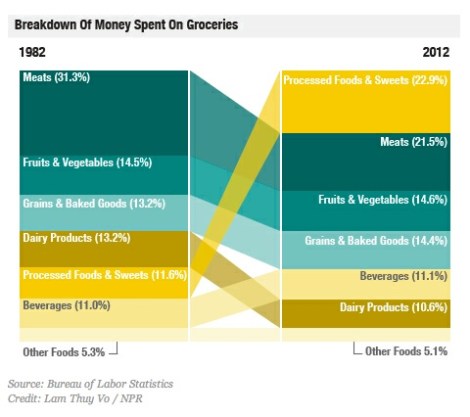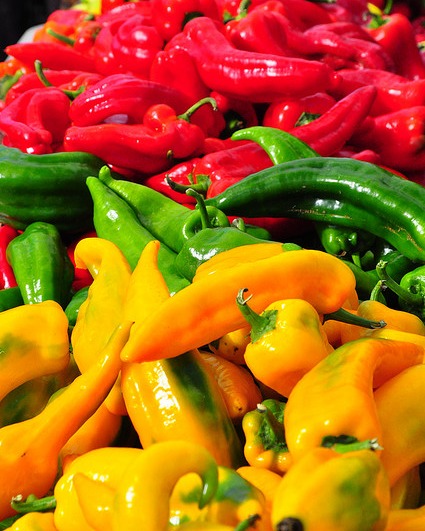As a proportion of our income, Americans spend a lot less money on groceries than we used to. But we’re buying crappier food — a greater proportion of our grocery spending goes to processed foods and sweets. NPR whipped up a handy chart to show how much this has changed in the past 30 years:

The other big change is that we’re spending less on meat. Pork chops, chicken legs, steak, ground beef, bacon — it’s all cheaper (and NPR has another handy graph to illustrate that point). We’re spending about the same on vegetables, though some of those have also gotten cheaper: lettuce, bananas, and hard, disgusting tomatoes that really should not share a name with the red globes of perfection that you can buy from local farmers. (Peppers, on the other hand, have gotten 34 percent more expensive. WHY DO PEPPERS COST SO MUCH?)
To ground all these statistics in reality, I took a look at the last grocery receipt I could turn up. I think of myself as a person who eats less meat, more vegetables, and less processed food than the average American. But when I crunched the numbers on my bill, there it was: I spent 23 percent on “processed food and sweets,” just the same as any other fool.
To be fair, I was generous with what I counted in this category: pre-made cheese ravioli, peanut butter, raspberry jam, Kashi GoLean cereal, and a bunch of sugar that was destined for a strawberry-rhubarb pie. I like to think that all sort of counts as real food — more so than frozen dinners or snacks. But it’s definitely all processed. And most of it, except maaaaaybe the ravioli, is just sugar dressed up in different costumes.
The solution here, if you can call it a solution, is clearly to just buy tons of peppers, because they are delicious and we will not have money left to buy anything else.



